Daylily "Stella de Oro": description and rules of cultivation
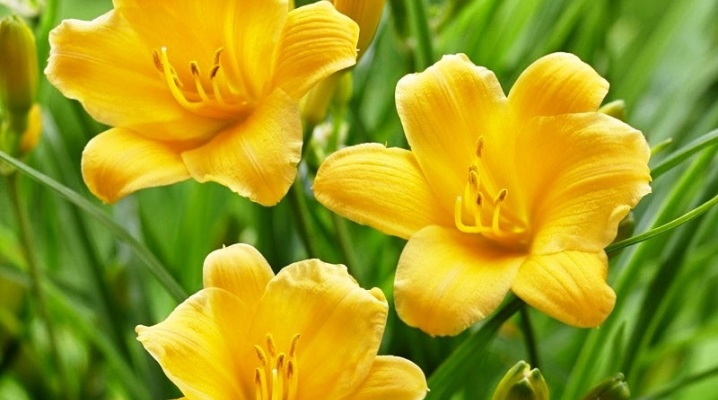
Midsummer is the time of flowering of one of the elegant, delicate plants - daylily or, as it is called in the vastness of Russia, krasodneva. The perennial plant is a true decoration of the garden thanks to its long continuous flowering. Dense thickets of narrow long leaves, collected in a voluminous rosette, surround tall peduncles with large flowers of various shades - from yellow to burgundy.
The funnel-shaped flowers consist of 6 separate petals and are shaped like lily flowers. Many flower growers appreciate daylilies not only for their beauty and richness of colors, but also for their unpretentious care, making the plant suitable even for inexperienced gardeners. Only hybrid varieties such as the Stella de Oro dwarf daylily require a little more attention.
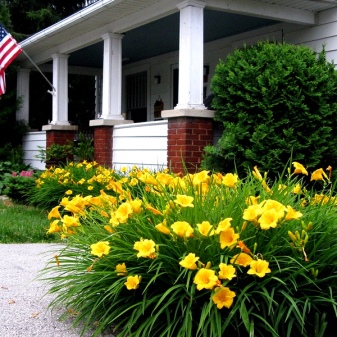
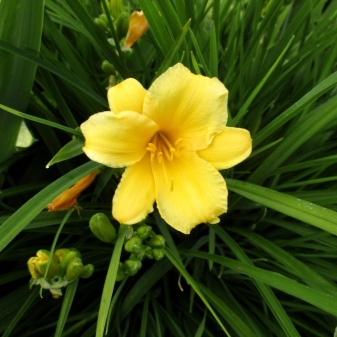
Description
Daylily "Stella de Oro", like all plants of its species, belongs to the perennial grasses of the subfamily Daylily family of the Asphodelov family. This is a hybrid dwarf variety with a peduncle height of up to 0.4 m. The roots of the plant consist of thickened filamentous processes, collected in powerful bundles.
Broad-linear drooping leaves with solid edges form lush clumps, above which flower stalks up to 40 cm long with 2-10 flower buds rise. Due to the beautiful shape and elegant green appearance, the leaves of the daylily do not lose their decorative effect throughout the growing season - from early spring to late autumn.
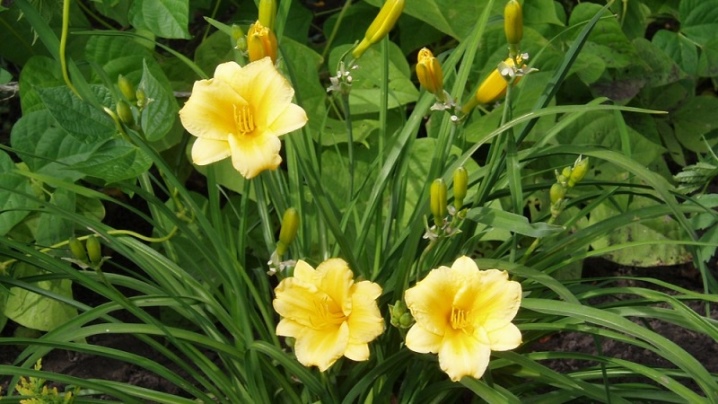
The relatively medium-sized flowers of a rich golden-yellow color do not exceed 60 mm in diameter, but the dense arrangement of the petals creates a feeling of a solid surface, which makes them visually appear larger.
Flowers of the Stella de Oro variety have a light pleasant aroma. The flowering time of a single flower rarely exceeds a day, but due to the large number of flower stalks ejected by the plant, as well as the number of buds on them, "Stella de Oro" is decorated with flowers almost all summer with a small inconspicuous break. Krasodnev is a winter-hardy herbaceous perennial that can grow in one place for a long time.

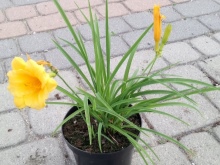
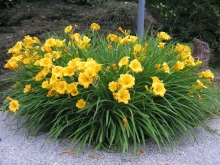
Planting and leaving
Although the daylily is unpretentious, if you decide to place a hybrid variety on the site, then you should devote a little more time to it.
A place
When choosing where to plant the Stella de Oro daylily, you need to take into account the fact that, although it can grow anywhere, it is best to plant beautiful daylilies in sunny areas with moderately moist fertile soil. Plants easily tolerate light partial shade without losing flowering intensity. If the daylily does not have enough light, then the florist may face the problem of the lack of flowers on an outwardly healthy plant.
It is also worth remembering that although Krasnodar prefers moist soil, stagnant water in the soil can lead to the death of the plant.
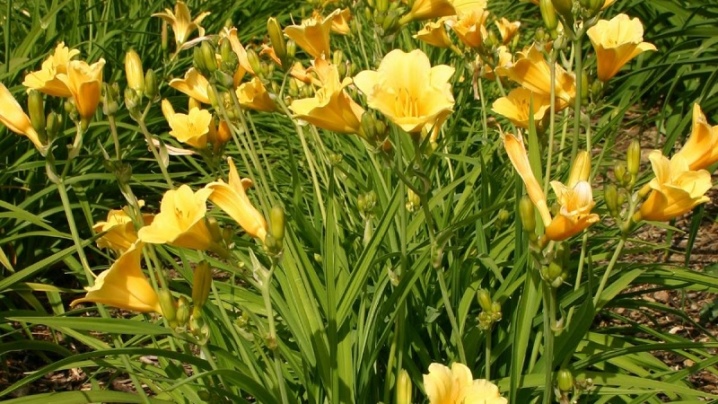
Time
The most suitable time for planting krasodnev is spring. Plants planted at this time of the year have time to take root well and adapt in a new place. You can also plant the plant anytime during the summer. The deadline for transplanting daylilies is September, but the plants planted this month may not have time to gain strength by winter and die, so it's better not to risk it.

Landing
Having determined a place for planting, the soil must be prepared. For this, it is best to use peat, humus and coarse river sand, which are introduced into the soil at the site of future planting.Then the planting pits are dug a little more deep than the root ball of the plant. If it is decided to plant daylilies in a group, then each bush must be placed at a distance of at least 0.4 m in order to provide freedom for growth.
Complex fertilizers containing phosphorus and nitrogen are introduced into the soil, then cuttings are planted, making sure that the growth point does not go into the soil to a depth of more than 20 mm. In order for the roots of the plant to settle better in the soil and take root faster, a small land tubercle is poured at the bottom of the hole, at the top of which a process is located. The roots are distributed along the elevation and covered with earth, trying not to leave air voids. Planted plants are well watered at the root. Watering is carried out regularly, without letting the earth dry out. It takes up to 1.5 months for a newly planted plant to adapt
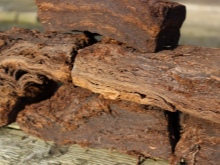
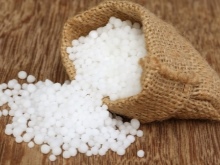
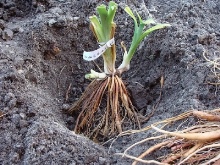
Care
The Stella de Oro variety is distinguished by its unpretentious care. In order to ensure lush flowering, it is necessary to fertilize in the spring with preparations containing nitrogen and phosphorus. With the onset of flowering, the plant requires an increased dose of potassium. Daylilies love water, so you need to keep the ground around the bush moist. In dry times, the plant requires intensive watering, and to retain moisture, the soil around the bush is mulched.
Krasodnev is quite winter-hardy and hibernates without shelter, but it is better, in preparation for wintering, to cut off the entire aerial part of the plant to the ground, and mulch the site with peat. A layer of mulch is made about 0.3 m. After the snow cover melts, the mulch is removed, leaving a thin layer to retain moisture.
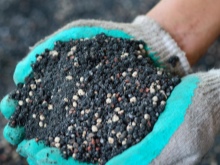

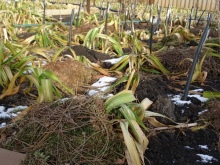
Reproduction
You can multiply the number of favorite plants on the site in three ways: by seeds, dividing the bush and cuttings. If propagated by seeds, then the Stella de Oro daylily may have difficulties with this, since for hybrid varieties with this method of breeding, there is a possibility of losing characteristic properties that fit the description of the variety. It is also a big problem to get healthy full-fledged seeds, so the most convenient way of reproduction is to divide an adult bush.
In one place, the daylily can grow up to 10 years, forming dense clumps, abundantly strewn with flowers. To prevent thickening of the plantings, every 5 years the bush can be dug up and divided into several parts, which will increase the number of new plants. Up to 40 divisions can be obtained from one rhizome, depending on the state of the bush. The division of the rhizome is carried out in the fall, after the end of the flowering period, or in the spring, when the growth of new foliage begins. The bush is dug up, the roots are gently washed. The rhizome peeled from the ground is divided into parts by hands. Remove damaged and diseased parts of the roots, shorten too long processes.
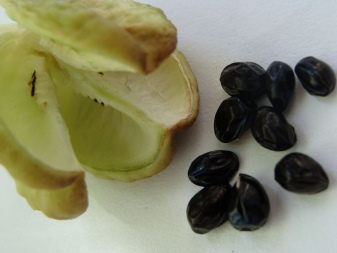
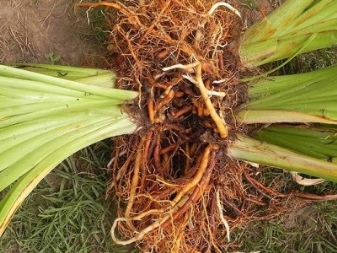
Places of breaks and cuts are sprinkled with crushed charcoal.
If the division is carried out in the fall, then the cuttings are dried, shortening the length of the tops by half. With a favorable weather forecast or in spring, the divided plant is planted in a new place. Otherwise, the cuttings are stored until spring days in a dark, cool place.
To propagate the plant by cuttings, it is necessary to find on the peduncle and carefully cut off the young rosette of leaves that are formed from dormant buds. The rosette is cut along with a piece of stem about 40 mm long and planted in the ground for rooting. Before planting, the leaves are shortened by a third. After planting, the seedling is slightly shaded and regularly sprayed with water. As soon as the planted cuttings have roots, the plant begins to be watered abundantly and regularly.
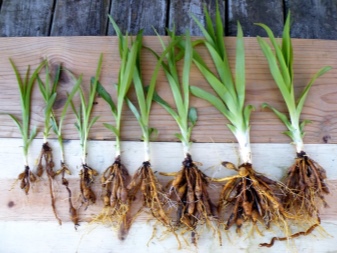

Diseases and pests
Like any plant, the Stella de Oro daylily has not escaped the encounter with insects - pests and various diseases. Most often, the plant is attacked:
- thrips and aphids;
- different types of ticks;
- slugs and snails;
- can be harmful by planting bears and nematodes.
To combat insects, you can use various preparations designed specifically for these purposes. For example, "Medvedoks", "Aktara", "Nemabokt" and others, offered in abundance by specialized stores. It is difficult to completely get rid of ticks and thrips, but compliance with the rules of agricultural technology, spraying the underside of the leaves with water and regular treatment with preparations will allow to reduce their number.
Also, in preparation for winter, dried tops are removed and burned.
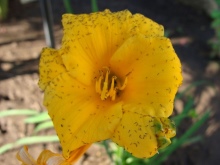
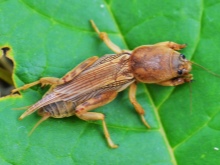
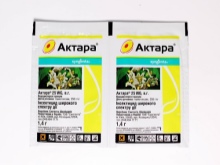
Gastropods are resistant to various drugs. The most effective way to deal with them was and remains the manual collection of pests, as well as regular loosening of the soil, destruction of weeds and dark beer poured into cups half dug into the ground. Krasnodnevs are also affected by various types of bacterial, viral or fungal diseases.
To avoid contamination of the plant, it is necessary to regularly feed, sanitize and transplant. In case of illness, spraying with chemicals of the required spectrum of action is used. If the treatment does not bring positive results, then the affected plant is completely dug up and destroyed, and the earth is disinfected. But if the florist observes the rules of planting and caring for the daylily, then the plant will not give him any trouble and will delight him for a long time.
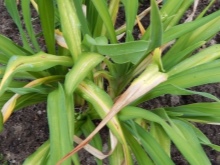
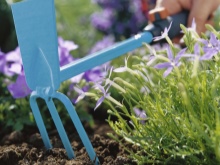
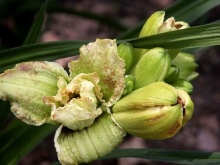
Application in landscape design
- Beautiful dwarf thickets with flowers of a sunny shade will always find worthy use in creating beautiful flower beds. Unlike tall species used in landscape design to decorate the background, the dwarf Stella de Oro is often pushed to the forefront of the flower garden.
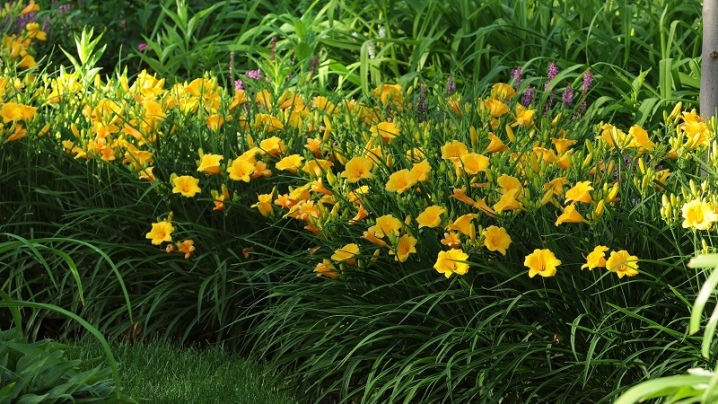
- Since the daylily "Stella de Oro" throws out its leaves very early, it is often used to decorate the edges of paths or flower beds.
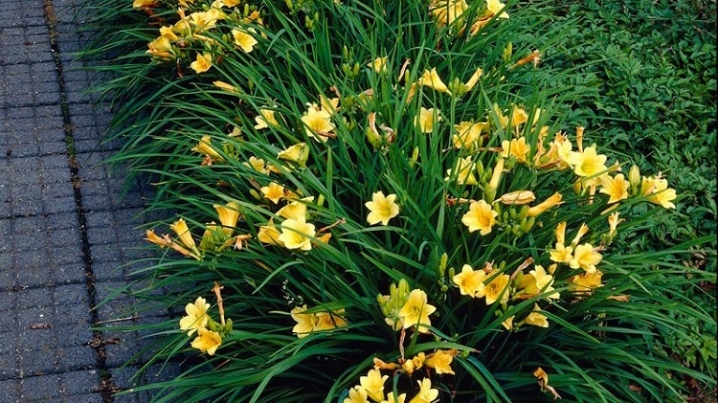
- The beauty of the day feels good on the banks of streams and other bodies of water, creating a living fence of the banks.
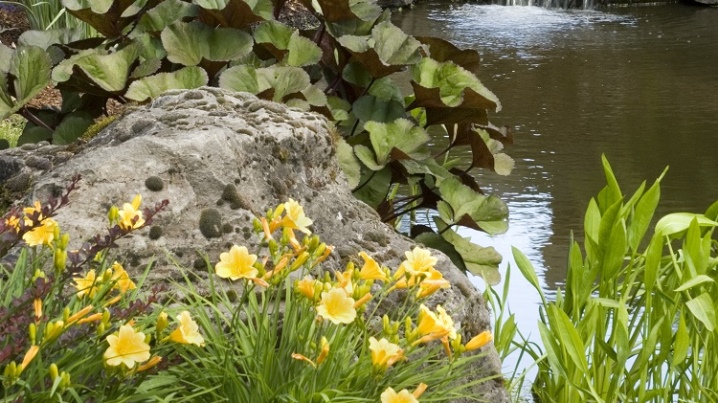
- Use a miniature plant to create rock gardens or mixborders.
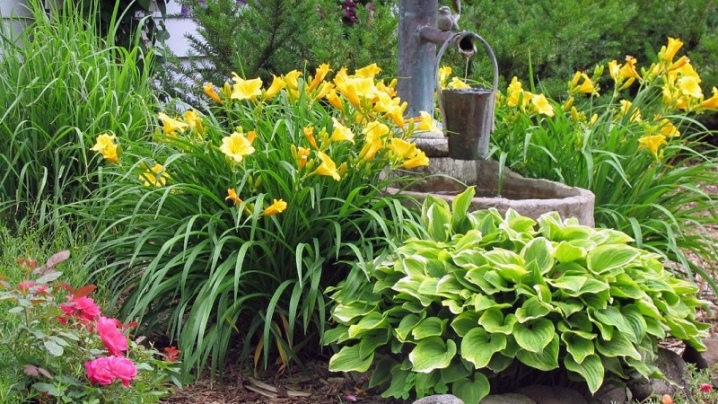
- Single plantings of "Stella de Oro", which form sunspots on a green background of a smooth lawn, also look great.
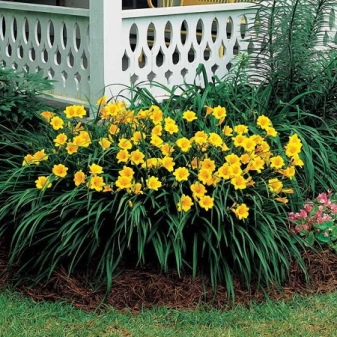
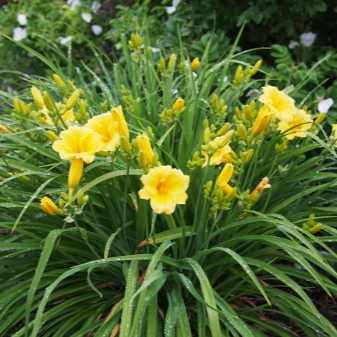
In the next video, you will find a short overview of the Stella de Oro daylily.




































































































The comment was sent successfully.